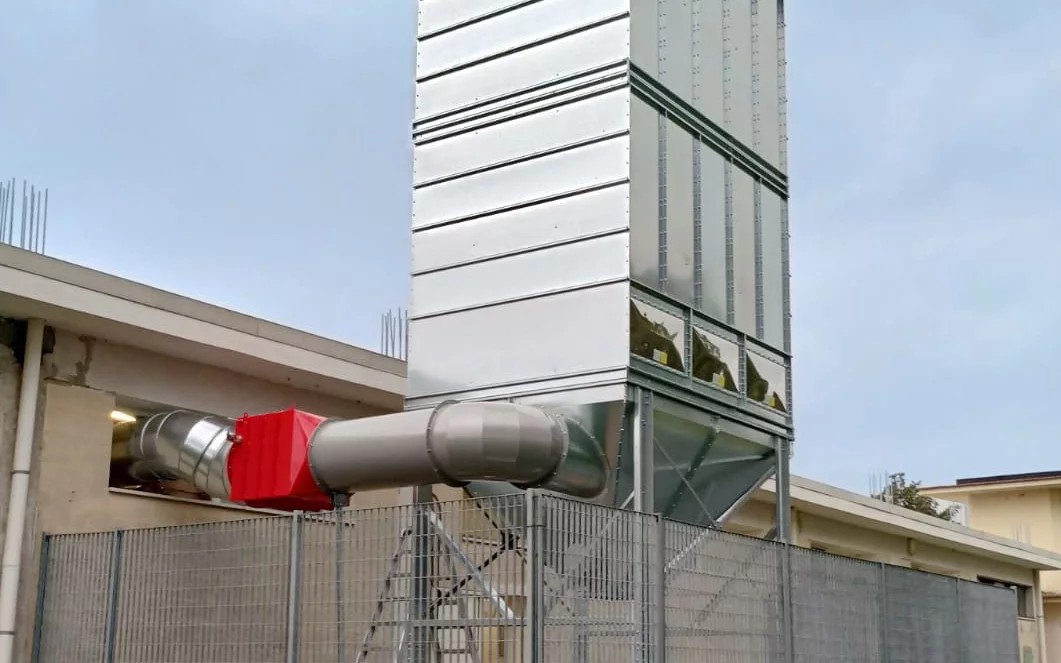A well-functioning dust extraction system is essential to maintain air quality and ensure a safe working environment. To assess its efficiency, there are several operational parameters and metrics to consider.
Airflow and Suction Power
One of the first indicators of an extraction system's performance is its airflow and suction power. These determine the system's ability to capture dust and maintain a clean workspace. If airflow decreases, it could indicate blockages or malfunctions within the system. Regularly monitoring airflow and ensuring the ducts are in good condition helps maintain high efficiency.
Filtration Efficiency
The efficiency of the filters is another crucial element. High-efficiency filters, such as HEPA or nanofiber filters, are designed to capture even the finest particles. Over time, filters can become clogged, reducing their effectiveness. It is important to monitor the filter's lifespan and replace or clean it according to the manufacturer's recommendations to ensure optimal performance.
Pressure Drop
The pressure drop within the system is an essential indicator of its performance. A high-pressure drop often signals that the filters are clogged or that there is a blockage in the ducts. Monitoring the pressure difference between the dirty air side and the clean air side helps identify issues early and avoid unnecessary downtime. A continuous increase in pressure drop over time suggests that maintenance may be needed or that the filter should be replaced.
Energy Consumption
A critical yet often overlooked aspect of evaluating extraction systems is energy consumption. Efficient systems must balance airflow with energy use, avoiding excessive consumption. Modern systems incorporate variable frequency drives (VFDs), which allow the system to adjust power according to real-time needs, improving energy efficiency. Conducting regular energy audits can help identify inefficiencies that could lead to unnecessary energy use.
Dust Collection Capacity
The volume of dust collected over time also provides insight into the system’s performance. If the system is not capturing as much dust as expected, it could indicate leaks in the ducts or insufficient suction power. Regularly inspecting the dust collection containers and comparing them to operating hours helps ensure that the system is capturing the full volume of particles.
Workload Adaptability
A good dust extraction system should be versatile and capable of handling varying workloads. In many industrial environments, the amount and type of dust produced fluctuate throughout the day or depending on the process. Systems that can automatically adjust these variations, through adjustable fans or advanced control systems, maintain high efficiency and prevent overloading or underperformance.
Maintenance
Regular maintenance is crucial to extend the life of a dust extraction system. This includes inspecting ducts for leaks, checking the integrity of seals, and maintaining fans and filters. Components such as fans, motors, and filters should undergo periodic inspections to prevent unexpected failures. Following a scheduled maintenance plan helps avoid costly repairs and ensures the system continues to operate efficiently.
Workplace Safety and Compliance
In addition to performance, the dust extraction system must comply with safety regulations and industry standards. Inefficient systems can lead to hazardous conditions, including the accumulation of combustible dust, which increases the risk of fire or explosion. Keeping the dust extraction system in optimal condition not only improves performance but also ensures compliance with environmental and safety regulations.
Data and System Monitoring
Modern dust extraction systems are often equipped with sensors and monitoring software that provide real-time data on performance. These systems enable proactive maintenance and quick identification of issues. Monitoring data such as airflow, pressure, and energy consumption helps operators make informed decisions and optimize system efficiency.
Conclusion
Evaluating the performance of a dust extraction system requires a multifaceted approach, including airflow, filtration efficiency, pressure drop, and energy consumption. Regular maintenance, adaptability to workload, and advanced monitoring play key roles in ensuring optimal functionality. By keeping these factors under control, the dust extraction system will not only protect the workplace but also operate at maximum efficiency, saving time and costs.

